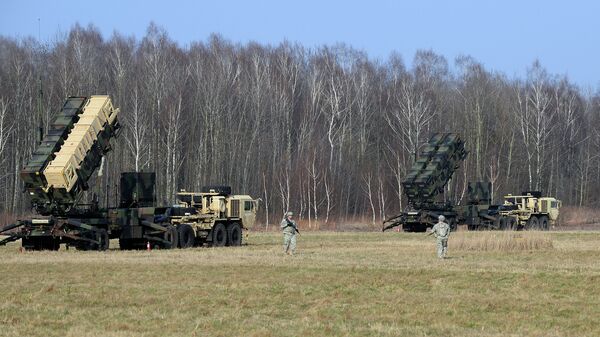WASHINGTON (Sputnik) — US anti-ballistic missile defense to protect Europe against Iranian attacks is not needed, Massachusetts Institute of Technology (MIT) Professor Emeritus of Science, Technology and National Security Policy and former Pentagon official Theodore Postol told Sputnik.
“Of course [the] missile defenses are not needed,” Postol said on Wednesday. “There is no ballistic missile threat from Iran against the United States, or for that matter, Europe.”
According to the nuclear agreement announced on Monday between Iran and the P5+1 nations — the United States, Russia, China, France and the United Kingdom plus Germany, Tehran will give up 98 percent of its weapons-grade uranium and end its alleged efforts to make nuclear weapons.
“If the ballistic missiles are not armed with nuclear weapons, they can do almost no significant damage,” Postol added.
Iran lacked capability to build long-range missiles in enough numbers to threaten the United States, and so did North Korea, the expert said.
“The North Koreans, who are supposed to be closer to having a large long-range ballistic missile that could reach the United States, are probably 20 years away from modernizing the missile in a way that would allow it to deliver a payload against the mainland US,” he said.
Even if North Korea had produced enough nuclear material to make a warhead, it still would face enormous technological, engineering challenges.
North Korea’s nuclear engineers would have to make the warheads small enough to put on one of their own intercontinental ballistic missiles (ICBMs), Postol pointed out.
“This, of course, assumes that they are able to miniaturize and ruggedize a nuclear warhead so that it can be launched in the high acceleration and high vibration environment associated with the powered flight of the long-range missile,” he added.
Postol warned that successive US administrations had become obsessed with the mythical capabilities of missile defense systems.
“If you think it is possible to open a debate on this matter, I would certainly be pleased to participate. However, the debate will not be rational,” he said.
The problem, he argued, was that US policy makers always wanted to deploy more missile defense systems regardless of whether they were needed or effective in the particular circumstances.
“After September 11, 2001, when it was clear that large aircraft were a much greater threat to our society than ballistic missiles, the missile defense program still proceeded and actually grew,” the expert recalled.
Postol previously worked as an analyst at the US Office of Technology Assessment and as a science and policy adviser to the Chief of Naval Operations, the operational head of the US Navy.
In 2001, Postol received the Norbert Wiener Prize from Computer Professionals for Social Responsibility for uncovering numerous false claims about missile defenses.




